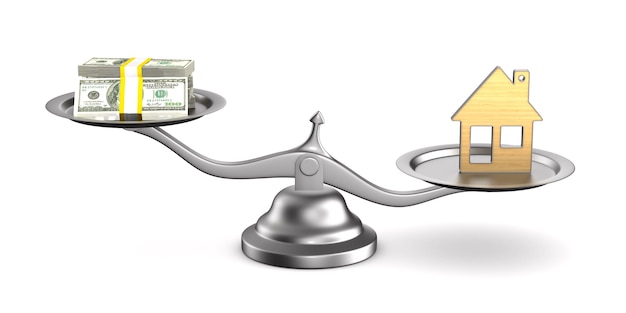Financial Health Checkup: Monitor These 5 Key Indicators Monthly

Financial health checkups are crucial for assessing your current financial situation and planning for the future; monitoring key indicators like credit score, debt-to-income ratio, emergency fund, net worth, and savings rate monthly provides valuable insights into your financial well-being, enabling timely adjustments for a secure financial future.
Are you on the right track to achieve your financial goals? A Financial Health Checkup: 5 Key Indicators to Monitor Monthly can provide a clear picture of your current financial standing, helping you make informed decisions and stay secure.
Why a Monthly Financial Health Checkup Matters
Taking a monthly financial health checkup is essential for maintaining financial stability and achieving long-term goals. By consistently monitoring key indicators, you can proactively address potential issues and optimize your financial strategies.
Regular checkups can help you stay on top of your spending, savings, and investments, ensuring you’re making progress toward your objectives. Let’s delve into why this practice is so beneficial.
Early Issue Detection
Monitoring your financial health monthly allows you to identify problems early on. Small issues, if left unaddressed, can quickly escalate into larger financial burdens.
Informed Decision-Making
Having a clear view of your finances empowers you to make informed decisions. Whether it’s adjusting your budget, refinancing debt, or rebalancing your investment portfolio, data-driven decisions lead to better outcomes.

Goal Tracking
Regular checkups provide a benchmark for tracking your progress toward financial goals. Whether it’s saving for retirement, buying a home, or paying off debt, monitoring your progress keeps you motivated and on track.
- Identify potential financial issues early.
- Make informed decisions about your money.
- Track your progress towards your goals effectively.
- Adjust your strategies to stay on course.
In summary, a monthly financial health checkup offers numerous benefits, from early issue detection to informed decision-making and goal tracking. By incorporating this practice into your routine, you’ll be better equipped to manage your money and achieve financial success.
Key Indicator 1: Credit Score
Your credit score is a critical component of your financial health. It affects your ability to secure loans, mortgages, and even rent an apartment. Monitoring your credit score monthly helps you ensure accuracy and identify potential issues.
A good credit score can open doors to better interest rates and financial opportunities. Let’s examine why monitoring it is essential.
What Impacts Your Credit Score?
Several factors influence your credit score, including payment history, credit utilization, length of credit history, credit mix, and new credit. Understanding these factors can help you take proactive steps to improve your score.
How to Monitor Your Credit Score
You can monitor your credit score through various methods, such as checking online credit reporting services, using credit card statements, or utilizing free credit monitoring tools. Choose a method that works best for you and review your score regularly.
Addressing Credit Report Errors
If you find errors on your credit report, it’s crucial to address them promptly. Dispute any inaccuracies with the credit bureau and provide supporting documentation. Correcting errors can significantly improve your credit score.

- Payment history.
- Credit utilization.
- Length of credit history.
- Credit mix.
Monitoring your credit score monthly is a vital step in maintaining overall financial health. By understanding the factors that influence your score and promptly addressing any issues, you can improve your creditworthiness and access better financial opportunities.
Key Indicator 2: Debt-to-Income Ratio
The debt-to-income (DTI) ratio is a financial metric that compares your monthly debt payments to your gross monthly income. Monitoring your DTI can help you assess whether you’re carrying too much debt relative to your income.
A high DTI can indicate financial strain, while a low DTI suggests financial stability. Here’s how to keep an eye on it.
Calculating Your DTI
To calculate your DTI, divide your total monthly debt payments (including rent, mortgage, credit cards, loans, etc.) by your gross monthly income (before taxes and deductions). Multiply the result by 100 to express it as a percentage.
Ideal DTI Range
Generally, a DTI of 36% or less is considered ideal. A DTI between 37% and 43% may be manageable but warrants caution. A DTI above 43% indicates potential financial stress and requires immediate attention.
Lowering Your DTI
There are several strategies to lower your DTI, such as increasing your income, paying down debt, or consolidating debt. Identify the most effective approach for your situation and take action to reduce your DTI.
- Assess your debt load relative to your income.
- Aim for an ideal DTI of 36% or less.
- Strategies to lower your DTI.
Monitoring your debt-to-income ratio monthly is a crucial aspect of financial health. By understanding your DTI and taking steps to lower it, you can improve your financial stability and reduce stress.
Key Indicator 3: Emergency Fund
An emergency fund is a savings account dedicated to covering unexpected expenses such as medical bills, car repairs, or job loss. Monitoring your emergency fund ensures you have sufficient resources to handle financial emergencies without incurring debt.
Having an adequate emergency fund provides peace of mind and financial resilience. Here’s what you need to know.
Ideal Emergency Fund Size
The recommended size of an emergency fund is typically three to six months’ worth of essential living expenses. Assess your monthly expenses and set a savings goal that aligns with this guideline.
Building Your Emergency Fund
If you don’t already have an emergency fund, start building one as soon as possible. Set a savings goal, create a budget, and allocate a portion of your income each month to your emergency fund.
Maintaining Your Emergency Fund
Once you’ve built your emergency fund, it’s essential to maintain it. Avoid using the funds for non-emergency expenses and replenish any withdrawals promptly. Regularly review and adjust as needed.
- Three to six months’ worth of essential living expenses.
- Start saving as soon as possible.
- Avoid non-emergency expenses.
Monitoring your emergency fund monthly is a critical aspect of financial preparedness. By ensuring you have sufficient savings to cover unexpected expenses, you can safeguard your financial well-being and avoid unnecessary stress.
Key Indicator 4: Net Worth
Net worth is a measure of your total assets minus your total liabilities. Monitoring your net worth provides a comprehensive view of your overall financial health and progress toward wealth accumulation.
A positive net worth indicates you own more than you owe, while a negative net worth indicates the opposite. Let’s see how to track it.
Calculating Your Net Worth
To calculate your net worth, list all your assets (such as cash, investments, real estate, etc.) and all your liabilities (such as debts, loans, mortgages, etc.). Subtract your total liabilities from your total assets to determine your net worth.
Tracking Your Net Worth Over Time
Monitor your net worth monthly or quarterly to track your progress over time. A growing net worth indicates you’re building wealth, while a declining net worth may signal financial challenges requiring attention.
Improving Your Net Worth
There are several strategies to improve your net worth, such as increasing your savings, investing wisely, paying down debt, and increasing your income. Focus on these strategies regularly to boost your net worth.
- Assets (cash, investments, real estate).
- Debts and loans.
- Strategies to boost your net worth.
Monitoring your net worth monthly is vital for assessing your long-term financial health. By tracking your progress and implementing strategies to improve it, you can build wealth and achieve your financial goals.
Key Indicator 5: Savings Rate
Your savings rate is the percentage of your income that you save each month. Monitoring your savings rate helps you assess whether you’re saving enough to reach your financial goals, such as retirement or major purchases.
A higher savings rate accelerates your progress towards financial security. Here’s how to keep tabs on it.
Calculating Your Savings Rate
To calculate your savings rate, divide the amount you save each month by your gross monthly income. Multiply the result by 100 to express it as a percentage. Include all forms of savings, such as retirement contributions, emergency fund deposits, and investment contributions.
Ideal Savings Rate
The ideal savings rate varies depending on your age, income, and financial goals. As a general guideline, aim to save at least 15% of your income. Increase your savings rate as much as possible to accelerate progress toward your goals.
Increasing Your Savings Rate
If your savings rate is below your target, identify strategies to increase it. This may involve cutting expenses, increasing your income, or automating your savings. Prioritize saving to achieve your financial goals.
- Retirement contributions.
- Emergency fund deposits.
- Contribution of investments.
Monitoring your savings rate monthly is crucial for ensuring you’re on track to achieve your financial goals. By assessing your savings rate and implementing strategies to increase it, you can build wealth and secure your financial future.
| Key Indicator | Brief Description |
|---|---|
| 📊 Credit Score | Assess your creditworthiness & identify errors. |
| 💡 Debt-to-Income Ratio | Evaluate debt load versus monthly income. |
| 💰 Emergency Fund | Ensure funds to cover unexpected expenses. |
| 💼 Savings Rate | Track percentageof income saved towards financial goals. |
Frequently Asked Questions
▼
Monitoring your credit score monthly helps you catch errors early, protect against identity theft, and track the progress you’re making toward improving your creditworthiness.
▼
Generally, a DTI of 36% or less is considered healthy. A DTI between 37% and 43% may be manageable, but anything above 43% suggests potential financial stress.
▼
A well-stocked emergency fund should ideally cover three to six months’ worth of essential living expenses. This provides a financial safety net for unexpected job losses or medical emergencies.
▼
To boost your net worth, focus on increasing your savings, investing wisely, paying down debt, and finding ways to generate more income. Consistent effort will yield significant improvements over time.
▼
Aim to save at least 15% of your gross monthly income. If your income is higher or you’re saving for a specific goal, consider increasing this percentage to reach your objectives faster.
Conclusion
Performing a financial health checkup: 5 key indicators to monitor monthly is a proactive approach to managing your finances effectively. By staying informed about your credit score, debt-to-income ratio, emergency fund, net worth, and savings rate, you can make informed decisions and achieve your financial goals with confidence.






